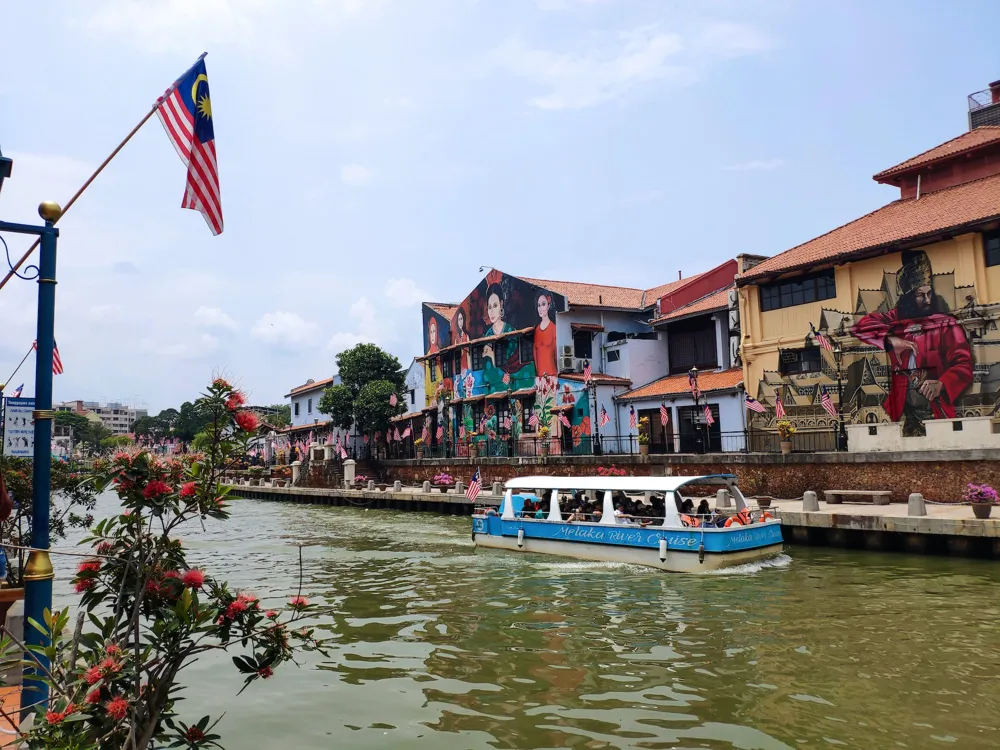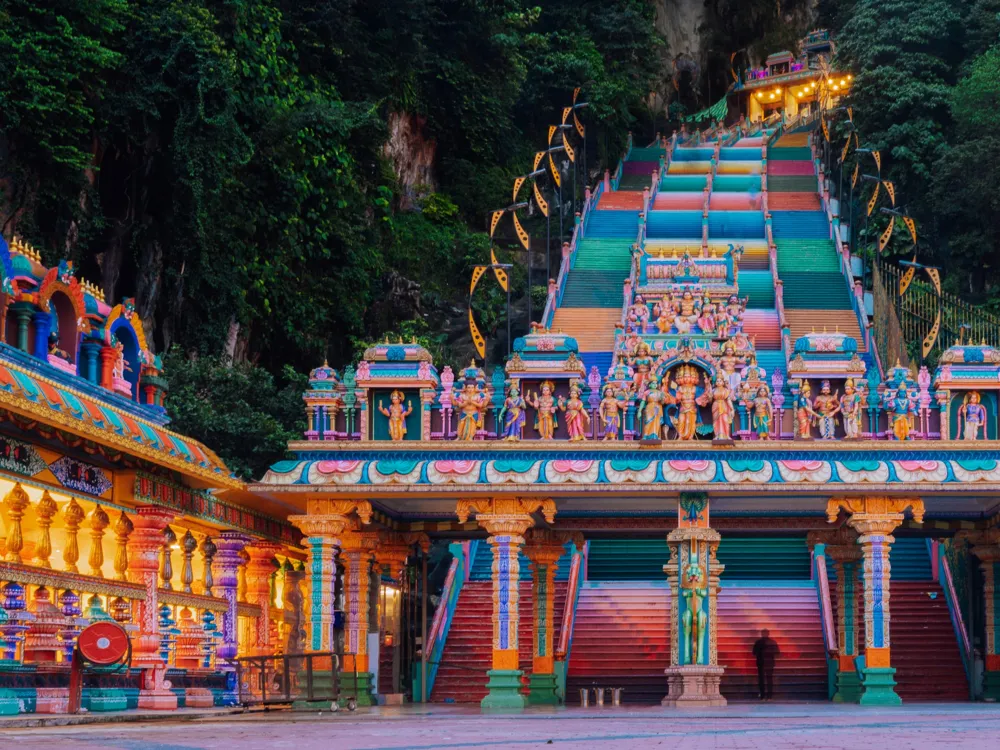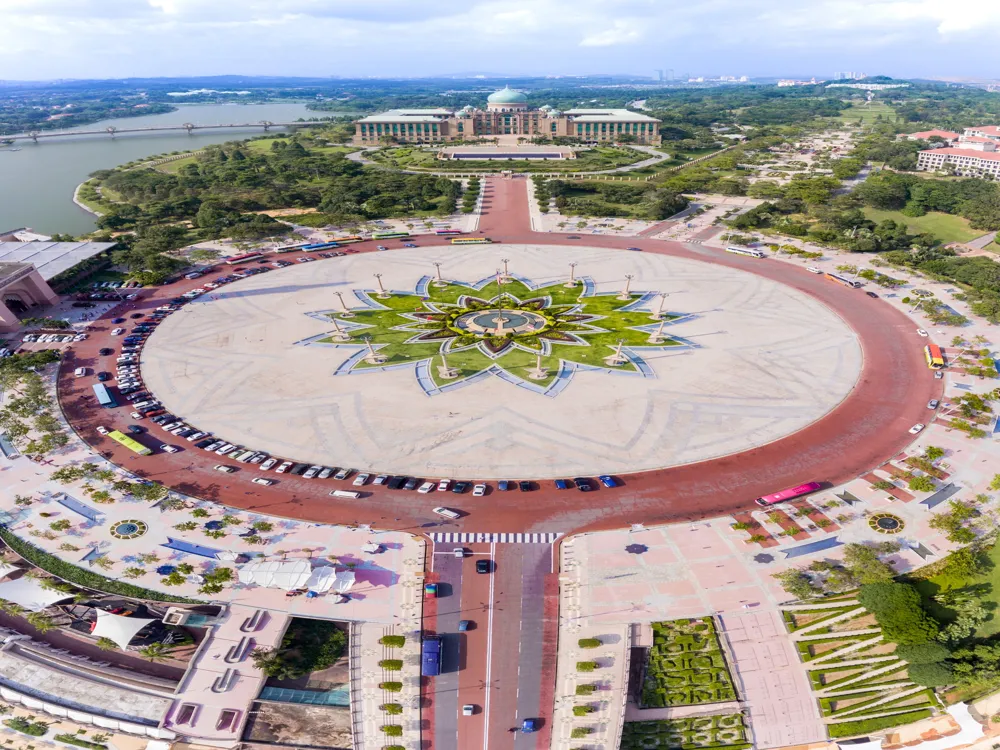Guan Di Temple, a significant cultural landmark in Kuala Lumpur, Malaysia, stands as a testament to the rich heritage and religious practices of the Chinese community in the city. This Taoist temple, dedicated to Guan Di, the Chinese deity of war and literature, is not only a place of worship but also a symbol of cultural unity and historical significance. Located in the heart of Chinatown, on Jalan Tun H.S. Lee, the temple is a beacon for devotees, tourists, and history enthusiasts alike. The temple's history dates back to the 19th century, making it one of the oldest temples in Kuala Lumpur. It was established by the local Chinese community who migrated to Malaysia during the tin mining boom. Over the years, the temple has undergone several renovations but has retained its historical essence and architecture. The Guan Di Temple serves as a hub for various cultural activities, especially during traditional Chinese festivals like the Chinese New Year and the Mid-Autumn Festival. These events are marked by vibrant celebrations, traditional performances, and a surge of devotees offering prayers. Visitors to Guan Di Temple are immediately struck by the serene yet vibrant atmosphere that envelops the place. The air is often filled with the scent of burning incense, a common practice among worshippers who come to seek blessings and guidance from Guan Di. The temple's significance extends beyond religious boundaries, serving as a cultural and historical landmark that offers insights into the local Chinese community's traditions, values, and beliefs. The temple's architecture, with its traditional Chinese designs, intricate carvings, and ornate decorations, reflects the rich artistry and craftsmanship of the era. The main deity, Guan Di, is enshrined within the temple and is revered by devotees who come from far and wide. The temple also houses other deities, each signifying different aspects of life and spirituality. The Guan Di Temple not only serves as a place of worship but also as a center for social gatherings, community bonding, and cultural exchanges, thus playing a pivotal role in the fabric of Kuala Lumpur's multicultural society. The architecture of Guan Di Temple in Kuala Lumpur is a splendid example of traditional Chinese temple design, blending both religious symbolism and aesthetic beauty. The temple's structure is characterized by its striking roof, adorned with intricate carvings and colorful ceramic figurines. These figurines, often depicting legendary Chinese tales and folklore, add a layer of cultural richness to the temple's facade. The roof, with its upturned eaves, is not just an architectural feature but also serves a symbolic purpose, believed to ward off evil spirits. As one enters the temple, the elaborate dragon and phoenix motifs on the temple doors catch the eye. These symbols represent male and female energies, respectively, and are considered auspicious in Chinese culture. The doors lead to the main hall, where the air is heavy with the scent of incense and the aura of devotion. The main hall houses the statue of Guan Di, an imposing figure clad in traditional warrior attire, embodying strength and wisdom. The statue, often surrounded by offerings from devotees, is a focal point of the temple's interior design. The use of red and gold throughout the temple is significant in Chinese culture, symbolizing good fortune and prosperity. The walls and pillars of the temple are adorned with red and gold motifs, calligraphy, and traditional Chinese paintings, each telling a story or conveying a moral lesson. The intricate woodwork and stonework in the temple demonstrate the skilled craftsmanship of the artisans who built it. Lanterns hanging from the ceiling add to the mystical ambiance, especially during the evening and festive seasons. Guan Di Temple also features a number of altars and smaller shrines dedicated to various other deities and ancestral spirits. These shrines are often decorated with candles, incense burners, and religious paraphernalia, offering a more intimate space for personal prayers and offerings. The temple's courtyard, though small, is an oasis of calm amidst the bustling city. It features traditional Chinese garden elements, such as rockeries, bonsai, and water features, providing a serene space for reflection and meditation. The fusion of architectural elements, religious iconography, and cultural symbolism makes the Guan Di Temple a living museum of Chinese architectural heritage. It stands not only as a place of worship but also as a monument preserving the architectural traditions and cultural practices of the Chinese community in Kuala Lumpur. The temple's architecture tells a story of migration, settlement, and cultural integration, making it an invaluable part of Kuala Lumpur's historical and cultural landscape. When visiting Guan Di Temple, it's important to show respect for the cultural and religious practices. Dress modestly, avoid loud conversations, and follow the temple's guidelines for photography. Remember, it's a place of worship first and a tourist attraction second. To avoid crowds, visit the temple early in the morning or late in the afternoon. However, if you wish to experience the temple in its full vibrancy, visiting during Chinese festivals like the Chinese New Year or the Mid-Autumn Festival can be quite enriching. Visitors are often welcome to participate in rituals like lighting incense or offering prayers. If you choose to do so, do it with respect and sincerity. It's also a good idea to observe others or ask for guidance if you're unfamiliar with the practices. Take your time to appreciate the intricate details of the temple's architecture and art. Notice the carvings, statues, and paintings that each tell a story of Chinese mythology and history. To enhance your experience, research the temple's history and the deity Guan Di before your visit. Understanding the cultural and historical significance can make your visit more meaningful. Guan Di Temple is easily accessible by various modes of transportation in Kuala Lumpur. If you're using public transport, the closest train station is the Pasar Seni LRT Station, which is just a short walk away from the temple. For those preferring a bus, numerous buses stop near Jalan Tun H.S. Lee, where the temple is located. Taxis and ride-sharing services are also convenient options, offering direct drop-off at the temple. If driving, there are several parking lots nearby, though they can get crowded during peak hours and festival times. For international visitors, the temple is about an hour's drive from Kuala Lumpur International Airport, depending on traffic conditions. It's advisable to check the traffic and public transportation schedules beforehand to plan your journey efficiently. The temple's central location in Chinatown also makes it a great starting point for exploring other nearby attractions, such as the bustling markets, street food stalls, and historical landmarks of the area. Read More:Overview of Guan Di Temple in Kuala Lumpur
Architecture of Guan Di Temple
Tips When Visiting Guan Di Temple
Respect the Cultural Norms
Best Time to Visit
Participate in Rituals with Sensitivity
Explore the Art and Architecture
Plan Your Visit for a Cultural Experience
How To Reach Guan Di Temple
Guan Di Temple
Kuala Lumpur
₹ 18,000 onwards
View kuala-lumpur Packages
Weather :
Tags : Temple
Timings : Monday - Friday: 7:00 AM -7:00 PM
Saturday - Sunday: 9:00 AM - 7:00 PM
Entry Fees : Free
Parking Space : Available at RM1 per hour
Highlight : Devotees believe that they will be blessed abundantly if they try to touch or raise the Guan Dao(copper sword) three times. This copper sword weighs approximately 59 kg.
Tips : You can purchase scented incense and joss sticks at a counter present inside the temple.
Planning a Trip? Ask Your Question
Kuala-lumpur Travel Packages
View All Packages For Kuala-lumpur
Top Hotel Collections for Kuala-lumpur

Private Pool

Luxury Hotels

5-Star Hotels

Pet Friendly
Top Hotels Near Kuala-lumpur
Other Top Ranking Places In Kuala-lumpur
View All Places To Visit In kuala-lumpur
View kuala-lumpur Packages
Weather :
Tags : Temple
Timings : Monday - Friday: 7:00 AM -7:00 PM
Saturday - Sunday: 9:00 AM - 7:00 PM
Entry Fees : Free
Parking Space : Available at RM1 per hour
Highlight : Devotees believe that they will be blessed abundantly if they try to touch or raise the Guan Dao(copper sword) three times. This copper sword weighs approximately 59 kg.
Tips : You can purchase scented incense and joss sticks at a counter present inside the temple.
Planning a Trip? Ask Your Question
Kuala-lumpur Travel Packages
View All Packages For Kuala-lumpur
Top Hotel Collections for Kuala-lumpur

Private Pool

Luxury Hotels

5-Star Hotels

Pet Friendly






















